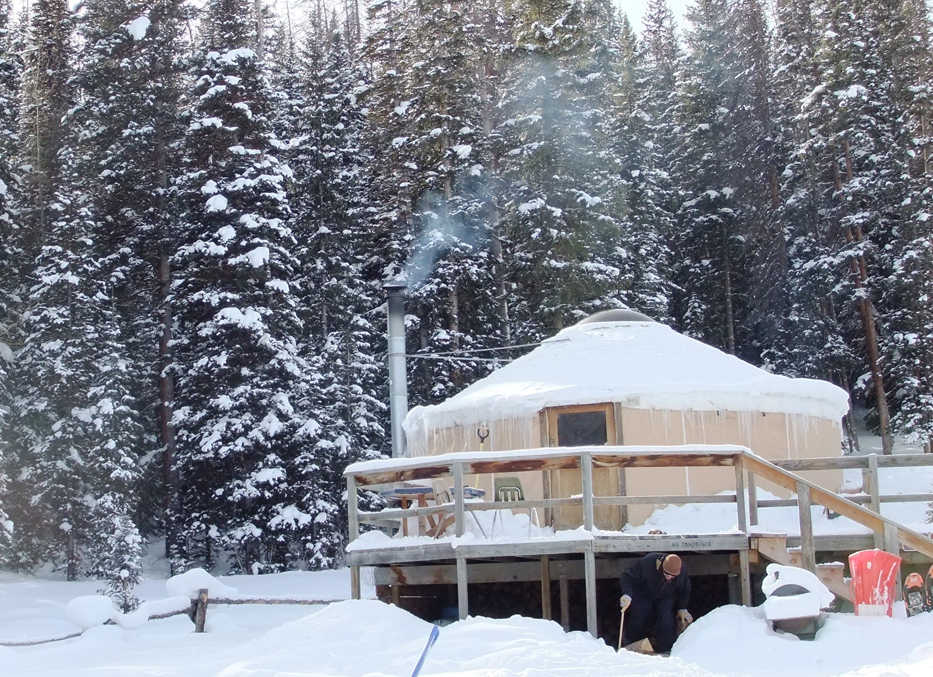Before I landed my dream job here with the Kenai National Wildlife Refuge Cabin Program, my wife and I had standing New Year’s Eve plans — spend a few nights in a yurt or cabin in one of Colorado’s state parks. The plan was simple — invite a bunch of friends and try to convince those who were more “indoorsy” that, yes, the yurt would be plenty warm and that, no, the outhouses weren’t bad at all. We’d ring in the New Year well out of cell service range, playing all sorts of card and board games that we never play at home while sneaking outside for some late-night sledding sessions. To be sure, it wasn’t all ‘Kumbaya’ around the fire, but even the mishaps, and there were plenty of those, were all part of the experience.
For example, the first year I had to break trail after a blizzard dumped over six feet of fresh snow. Another year I found myself running up the trail to get to the cabin and start a fire to warm up a ten-month-old baby on his first camping trip. And there’s the time we crammed the woodstove full just before bed and woke up to an inferno, a total sweat lodge that sent us scrambling for the door and the sweet relief of the freezing cold air. The stories and memories from these trips will stay with me for the rest of my days. Not bad for a kid from New York whose parents considered a hotel room with no a/c and only basic cable to be seriously roughing it.
I have these simple structures in the middle of the forest to thank for all these great times. They gave us a destination and a sense of security that a tent can only dream of. It didn’t take long for me to go from appreciating those trips, to looking forward to them all year, to missing them terribly. Luckily for me (and you), the public cabins on the Kenai National Wildlife Refuge offers the same opportunities to connect — not just with nature, but with our friends and family as well.
The Kenai Refuge Cabin Program began in 2005 with the restoration of several cabins that preserved fine examples of striking craftsmanship. Today the Refuge maintains 16 cabins, including nine historic structures, which are spread throughout the refuge — Tustumena Lake, Skilak Lake, and elsewhere on the western Kenai Peninsula. Access to the cabins varies from a short wheel-chair-accessible walk to longer boat or fly-in only access.
Each cabin is outfitted with just a bare minimum of creature comforts — sleeping bunks, a wood stove, indoor and outdoor picnic tables, a fire pit, and a cabin notebook where you can share a story or two. Some of the lakefront cabins include row boats as well. You’ll want to bring your own dry kindling and probably firewood as well. Firewood can be cut from dead and down trees (bow saws and splitting mauls are provided), but is scarce at the more popular locations. The cost of the cabins is $35 to $45 per night plus a booking fee and most require an advanced reservation (but Emma Lake and Trapper Joe cabins are first come/first served).
The Kenai National Wildlife Refuge is proud of our cabins and is thrilled that they are loved and well taken care of by the public. To make reservations for any of the reservable cabins log on to http://1.usa.gov/tsavSb. For specific questions about the cabins, please call the Kenai National Wildlife Refuge at 907-262-7021.
Meanwhile I’m planning on reinstating our New Year’s Eve tradition here on the Kenai Refuge. Who knows — maybe one day I’ll even be able to convince my parents to spend a night or two?
Daniel Saxton is a member of the cabin maintenance crew at Kenai National Wildlife Refuge. Find more information at http://kenai.fws.gov or http://www.facebook.com/kenainationalwildliferefuge.

